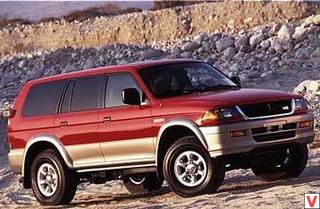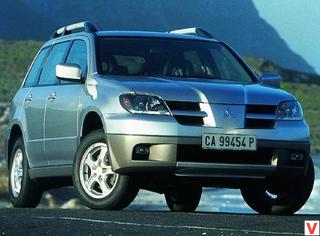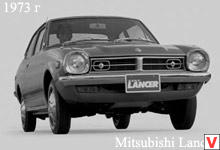
In 1992, the production of a sports modification of the Lancer model, called Evolution, began. Today, having survived more than one modernization, Lancer Evolution is divided into generations, each of which is identified by its Roman number. When creating the Evolution I company Mitsubishi Motors used the most daring and modern at the time of development. The car received four-wheel drive and a two-liter turbocharged engine with a top-mounted two camshafts (DOHC) used on the Galant VR-4, which developed a power of about 250 hp. The body of the first generation Lancer Evolution had reinforced welds and was made of more rigid materials, which made it possible to increase its rigidity by 20%.
To ensure easier travel of the suspension, some rubber-metal support for mounting the levers were replaced with ball bearings. Aluminum hood allowed to reduce the total weight of the car to a record 1170 kg, while the front and rear spoilers improved the aerodynamic characteristics of the body. The first generation Evo was available in two versions: GSR and RS. The purpose of the car was to participate in the World Rally Championship. The car immediately gained popularity. The first generation Evo marked the beginning of the glorious family of rally cars Mitsubishi. Release Lancer Evolution I lasted from October 1992 to January 1994. Already in 1993 appeared Lancer Evolution II.

The car became a little more powerful than its predecessor. Largely due to the reduction of the back pressure of the exhaust system, the engine power has increased by 10 hp. The second generation was based on the same chassis as the first, but underwent refinement, which made it possible to embody the entire operating experience of the first generation in rally racing. The main emphasis of designers was to improve the car’s handling. Body rigidity was increased and aerodynamic performance improved. At the bottom of the front bumper appeared damper air flow, and the additional aerodynamic projection ("wicker") in the rear of the wing allowed to increase the efficiency of the rear spoiler.
To increase the length of the suspension travel and optimize handling when cornering, the length of the front suspension arms and the height of the front struts were increased. Among the visual delights worth noting alloy wheels OZ. January 1995 was marked by the advent of the third generation Evolution. The exterior is more aggressive than its predecessors, thanks to changes in the car's body kit. Work on aerodynamics. An improved front spoiler, aerodynamic door sills and an increased rear wing have improved the car’s handling at high speeds. Changes in the interior of the Evolution III were limited only by the new Momo sports steering wheel (only in the GSR version).

However, the car has changed not only in visual terms. Due to changes in the configuration of the piston head, Mitsubishi mechanics brought the compression in the cylinders to 9.0. Increased the compressor output section from 60 to 68 mm and reduced the pressure in the muffler.
Thanks to these technical improvements, we managed to increase the power of the Evolution III engine to 270 hp. at 6250 rpm Now the dynamics of acceleration from 0 to 60 miles reached 4.9 seconds. Both versions of the Mitsubishi Lancer Evolution III - GSR and RS, are still equipped with a five-speed manual gearbox. In 1996, the pilot Tommy McEnin won his first championship title on Evolution III and brought Mitshubishi second place in the Cup of Designers. All these victories contributed to the consolidation of the image of one of the most sporting serial sedans in the world. In August 1996, began to produce Lancer Evolution IV.

This car was already designed on a completely new platform - CN9A. The fourth generation can be distinguished by the front bumper with two impressive PIAA foglights and a huge air intake. The hood lid is significantly different from the predecessor lids; it received a pair of air intakes - a large one in the center and a small one on the right side. The rear spoiler of the Mitsubishi Lancer Evolution IV is impressive not only for its size, but also for its shape. The base is made in the shape of a triangle and covers most of the trunk lid. Under the hood, an upgraded version of the 4G63 two-liter four-cylinder engine.
Improvements affected valve timing. In addition, the valves themselves were lightened, and the engine received a more efficient turbocharger. All these measures allowed to bring the power of the two-liter engine to 280 hp at 6500 rpm The car could be completed with a five-speed gearbox with close (close ratio) or extremely close (super-close ratio) gear ratios. The transmission has also been improved. In particular, the rear differential was equipped with an active Stability Control system (Active Yaw Control), and as the front differential, a self-locking (LSD) differential with a helical gear began to be used.
Such a transmission made it possible, by controlling wheel slip, to improve the stability of the vehicle’s trajectory when cornering. Initially, 6,000 cars went on sale. However, the demand was so great that, yielding to the persistent demands of consumers, the company additionally produced 3,000 more machines. Production of the Mitsubishi Lancer Evolution IV lasted until January 1998. In 1998, it was the turn of the fifth generation Lancer Evolution. At the heart of the car is the new CP9A platform.
It is distinguished from its predecessor by a more “muscular” appearance. The front spoiler not only added to the appearance of aggressiveness, but also allowed to improve the efficiency of the engine cooling system and charge air cooler. As a result of increasing the width of the front and rear wheels, aluminum wings received prominent protruding arches of wheel arches.
The high wing, inherited from previous generations, became adjustable, which allowed to adjust the downforce developed by it. Changes have been made and the headlights, which have received a more modern form. The hood was decorated with two large air intakes in the center and one small to the left. Changes in technical terms provided the Evolution V with 276 horsepower.
At first, the Lancer Evolution was intended only for the Japanese market, but due to rapid interest, since 1998, small shipments of the fifth and sixth generation Evo were exported to the UK and other European countries. The car has become a legend. Occasionally, limited quantities of suitable for use on public roads Lancer Evolution that were thrown onto the market were sold out immediately after the announcement and were paid by future owners for the long months before their actual release.
Evo V was produced exactly one year, until January 1999. In 1999, the all-wheel drive version of the Evo VI. The standard equipment includes sports front seats Recaro, ABS and Stability Program.
Creating the sixth generation, the designers focused on improving the cooling system and engine durability. The car received a more serious intercooler, oil cooler and new pistons, along with a titanium-aluminum turbine impeller for the RS model. Innovations touched the exterior of the car. Exterior Evolution VI distinguished modified bumpers. Fog lights have been increased in size and shifted to the corners of the bumper for better lighting. Along with the base model, the limited edition RS Sprint series was produced, modified by the Ralliart studio in England. Power Mitsubishi Lancer Evolution VI RS Sprint reached 330 l / s.
A limited batch of Lancer Evolution VI cars was released under the name Tommi Makinen Edition (in honor of the Finnish race car driver of the Mitsubishi Ralliart company team Tommy Mäkinen), who in 1999 set a record winning the World Rally Championship for the fourth time in a row. This version differed from the usual Evo VI in a different aerodynamic body kit, an exclusive sports interior with red-black Recaro seats and a MOMO steering wheel, as well as colors that reproduce the colors of a racing car and 17-inch ENKEI wheels in white.
In addition, the modification of the Tommi Makinen was equipped with a stiffer and lower suspension, more responsive steering and had a lower center of gravity. The release of the Evolution VI continued until March 2001, when it was replaced by the Evolution VII. The seventh generation was designed on the basis of a larger car Lancer Cedia. It absorbed a large number of different evolutionary mechanical improvements and received a completely updated body with an extended wheelbase, thereby reaching new levels of dynamics and technical excellence.
The car differed completely new aerodynamic "body kit" with smooth contours, as well as an improved transmission, equipped with modified versions of electronic systems for torque distribution and control of the adhesion of wheels with the road. The well-proven 2-liter engine with the letter code 4G63 was modified to provide close to maximum torque in almost the entire frequency range of the motor shaft. The power unit, supplemented by a turbocharger, had a capacity of 280 hp. Improved handling in cars of the seventh generation is largely due to increased by 50% compared with the previous generation, the rigidity of the body of this car.
In addition, the Lancer Evolution VII began to establish a new active center differential - ACD (Active Center Differential). The system monitors the difference in speed of rotation of the rear and front wheels with a multi-plate clutch with electronic control. It maintains the normal grip on the drive wheels.When driving in 4WD mode, so that the controllability of the car does not suffer. In addition to the automatic torque distribution mode, the possibility of forcing the choice of three possible operating modes of the center differential depending on the type of road surface - Tarmac (asphalt), Gravel (gravel) and Snow (snow) is also provided.
For the GSR modification, this feature was included as standard, and for the RS modification it was offered as an option. The AYC (Active Yaw Control system) deviation control system began to work much more naturally than in the Lancer Evolution IV, where it was first used. Moreover, the seventh generation of the ACD and AYC systems were integrated into each other. In 2002, sales of the Evolution VII GT-A with an automatic transmission began in Japan. This is the first in the history of the Lancer Evolution series car with hydromechanical transmission. The 5-speed INVECS-II Sport-Mode, borrowed from the Galant VR-4 model, also had a manual control mode.
However, in order to aggregate the gearbox with a 2-liter turbo engine, its power had to be slightly reduced (from 280 to 272 hp). The rest is the usual Evolution VII. The same massive bumpers with air intakes and spoilers, fender on the trunk lid, Bremto brake mechanisms. Like the top version of the GSR, the GT-A was completed with alloy wheels and low profile tires of dimension 225/45 R17. Many of the design elements of the Evolution VII GT-A were borrowed from the development of the eighth generation Lancer Evolution, released in January 2003. The car received a different body design, which is characterized by a new design of the front.
A large air intake appeared in the front bumper, providing the best airflow to the intercooler, as well as a new grille. In addition to the aesthetic beauty, Lancer Evolution VIII also differs by improved aerodynamics. It is noteworthy that it is 80 millimeters longer than its predecessor. In addition, the Lancer Evolution VIII received a new design of the front and rear bumper, which has increased the safety of the driver and passengers in the event of an accident, as well as being equipped with a more spacious gas tank and a more powerful rechargeable battery.
The Evolution VIII has lost its all-wheel-drive electronic system and is equipped with a more conventional center differential lock, as well as a viscous coupling that distributes traction between the front and rear axle. The engine and the braking system are similar to those with 17-inch brake discs in the front and 16-inch discs in the back. In addition, it can be noted that for the first time in its history, Mitsubishi made the Lancer Evo VIII not only as a sedan, but also as a wagon. Designed for the Japanese market, the car had an engine of 280 hp, but for Europe, for environmental reasons, its power was reduced to 265 hp.
Evolution VIII was the first generation Lancer Evolution, sold in the United States. However, many components of the American version were significantly reduced compared with the Japanese. For example, the American Evo VIII was deprived of the most significant feature of the Mitsubishi Lancer Evolution VIII - Super Active Yaw Control transmission. In March 2005, the Lancer Evo IX saw the light. The car has concentrated in itself all the advantages of previous generations of Evo and a number of improvements. Like the previous modification, the “nine” performed in three guises: “standard”, RS and MR.
The two-liter 4G63 engine received an improved valve timing control system and a modified turbocharger. Dynamics of acceleration to 100 km / h is 5.7 seconds, and the maximum speed - 250 km / h. A set of "standard" and RS received a five-speed manual gearbox, while MR equipped with a six-speed manual gearbox. The suspension was available in two versions: Kayaba shock absorbers (with Enkei alloy wheels) or Bilstein (with BBS forged wheels). The new design of the front of the body has improved aerodynamics and engine cooling. In the rear bumper appeared black diffuser, designed to increase the flow rate coming out from under the bottom, and, thus, increase downforce.
The aluminum roof and aluminum energy-absorbing beams in the doors helped to reduce the car's weight by 7.5 kg, which made it possible to lower the center of gravity and improve stability and control accuracy. Added new options and in the interior. There are some improvements in terms of comfort. Climate control was replaced by air conditioning, and upholstery in the Evo IX is made of leather and Alcantara from Recaro. The official world premiere of the tenth generation Evo was held in September 2007 at the Frankfurt Motor Show.
Evolution X is built on the platform of an ordinary Lancer, equipped with a sports suspension with all-wheel drive Super All Wheel Control (S-AWC3), as well as an active center and rear differential. An advanced all-wheel drive system that combines an unrivaled level of engine torque distribution and brake control makes the Lancer Evolution X the best vehicle in its class. Evolution X received a “charged” 2.0 liter turbocharged MIVEC3 gasoline engine (Mitsubishi Innovative Valve engineered with aluminum cylinder block (this significantly reduced the weight of the power unit) with 295 horsepower, which is aggregated with a six-speed automatic transmission with shift paddles.








